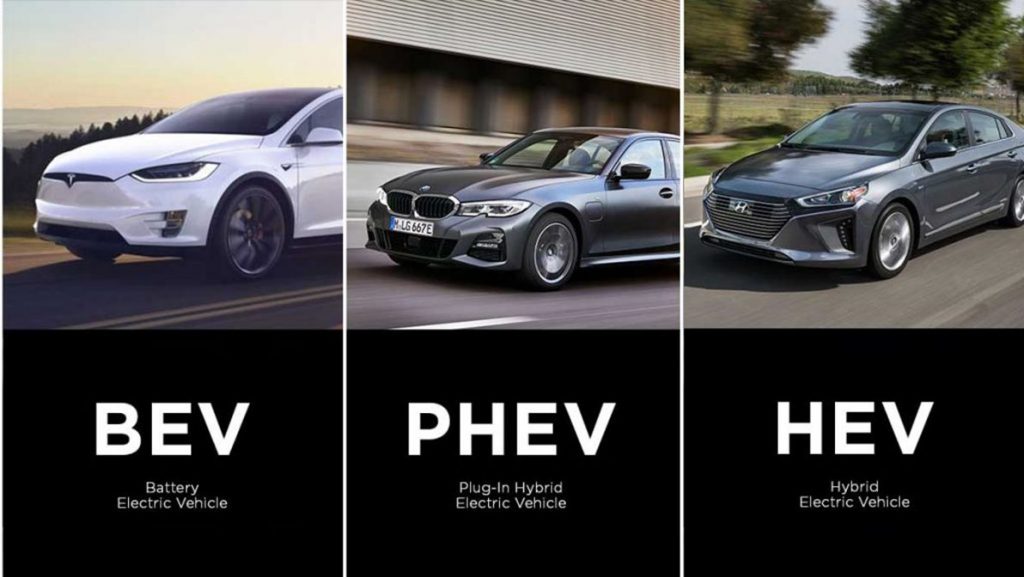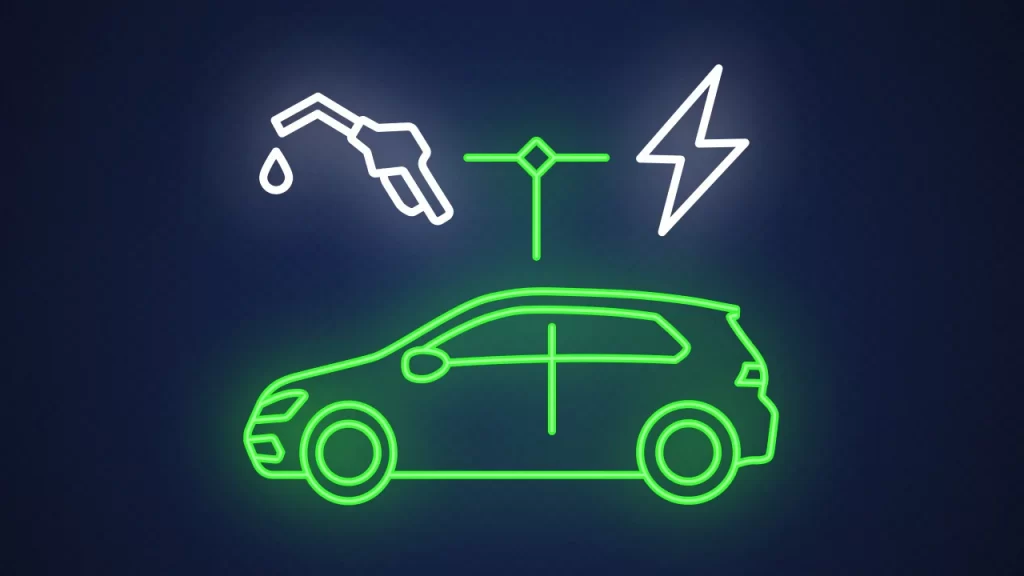Types of Electric Vehicles
When it comes to types of electric vehicles (EVs), the options people can buy go far beyond battery-only vehicles. Nowadays you can find all types, including options that rely on fuel cells or combine a petrol engine. in hybrids and plug-in hybrids.
In general, there are several main types of electric cars that we will talk about in this article: the standard EV, also known as a battery electric vehicle (BEV), the hybrid electric vehicle (HEV), and the plug-in hybrid electric vehicle (PHEV). There are also subsets of each type.
With all these acronyms, let’s break it down.

BEVs - Battery Electric Vehicles

Electric vehicles differ from most cars on the market in that they do not have an internal combustion engine. Instead of petrol, these vehicles run exclusively on battery power. Drivers can charge them at home with Tier 1 or Tier 2 EV chargers, or use more powerful (Tier 3) chargers designed for commercial charging stations. Because EVs use battery power without assistance from a Combustion engine powered, they can go much further on a single charge than hybrid vehicles. They are also known as battery electric vehicles or BEVs.
This distinguishes them from battery-powered hybrids supported by combustion engines. BEVs are zero-emissions vehicles, as they do not generate any harmful tailpipe emissions or air pollution hazards caused by traditional gasoline-powered vehicles.
Some popular EV models are pictured here:

Audi e-tron

Nissan LEAF

The Ford F-150 Lightning

Tesla Model S
PHEVs - Hybrid Electric Vehicles

Plug-in Hybrid Electric Vehicles, or PHEVs, have both an engine and an electric motor to drive the car. Like regular hybrids, they can recharge their battery through regenerative braking. PHEVs extend the concept of the standard hybrid vehicle. They have both an internal combustion engine and a battery-powered electric motor.
This allows the battery to store enough energy to drive the electric motor, thereby reducing fuel consumption by up to 60 percent. This saves you time and money at the pump. PHEVs can go up to 40 miles (40 miles) on electric power alone instead of a few miles with a standard hybrid vehicle.
Once the all-electric range is depleted, PHEVs act as regular hybrids, and can travel several hundred miles on a tank of gasoline.
Some popular PHEV models are pictured here:

Audi A3 e-tron

Hyundai Sonata

BMW 330e

Porsche Cayenne S E-Hybrid
HEVs - Hybrid Electric Vehicles

HEVs are powered by both an internal combustion engine and an electric motor that uses energy stored in a battery. However, unlike most electric vehicles, HEV drivers charge their batteries through regenerative braking.
Regenerative braking stores the kinetic energy used to stop the car to charge its battery and helps the internal combustion engine to accelerate the vehicle. Drivers want HEVs and PHEVs (more on that in a moment) for their fuel economy because their reliance on battery power consumes much of the gasoline that the internal combustion engine uses.
A type of HEV, the micro-hybrid, uses a battery and an electric motor to power the car. Although they cannot run solely on electricity, they maximize fuel economy by shutting off the combustion engine during full stops. The full hybrid has the battery power to drive the car purely electrically, but usually only for short distances. In a traditional internal combustion engine vehicle, this braking energy is normally lost as heat in the brake pads and rotors.
Some popular HEV models are pictured here:

Toyota Yaris

BMW X5 45e

Toyota Corolla

Mercedes E 300 e/de











